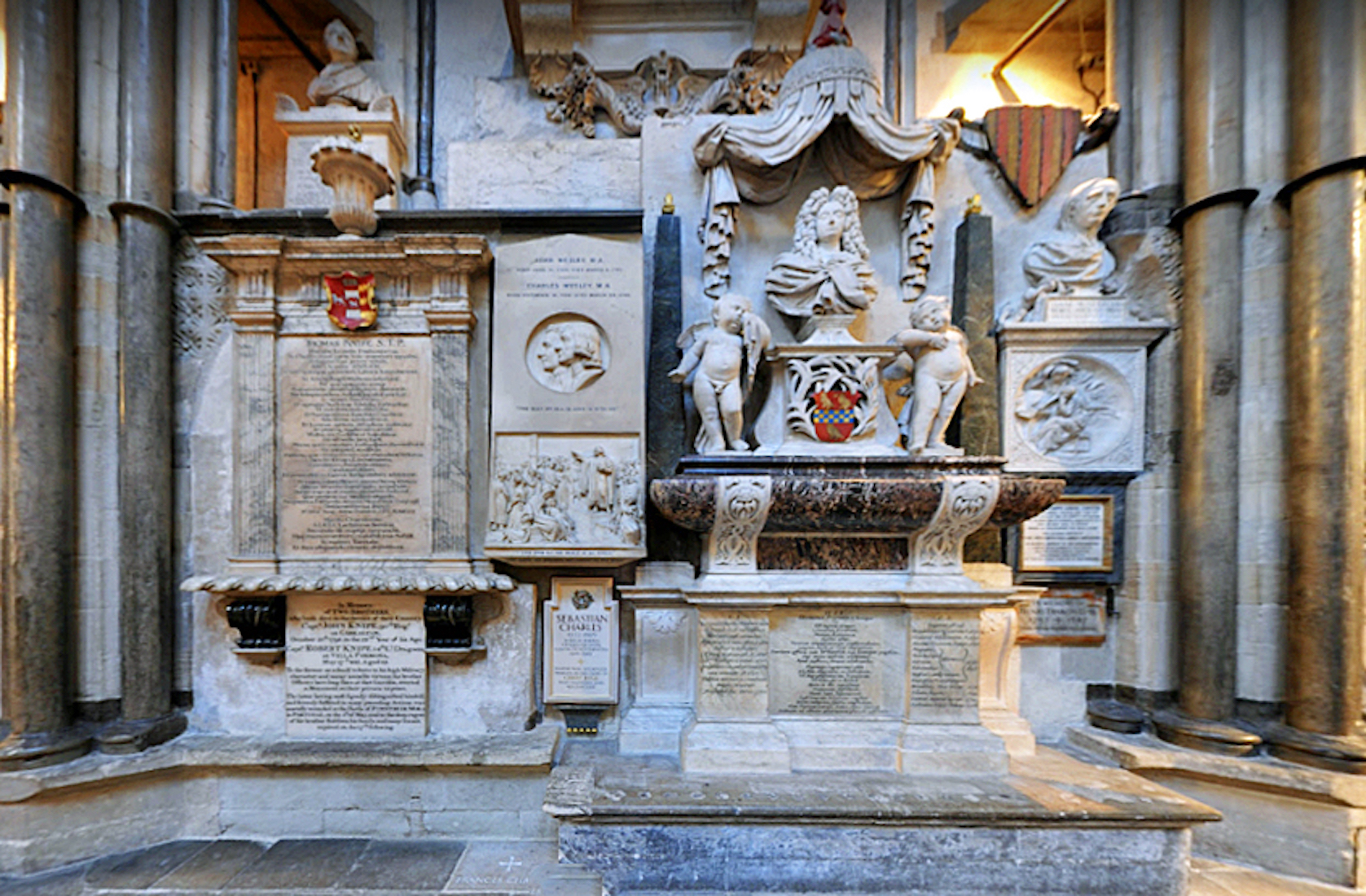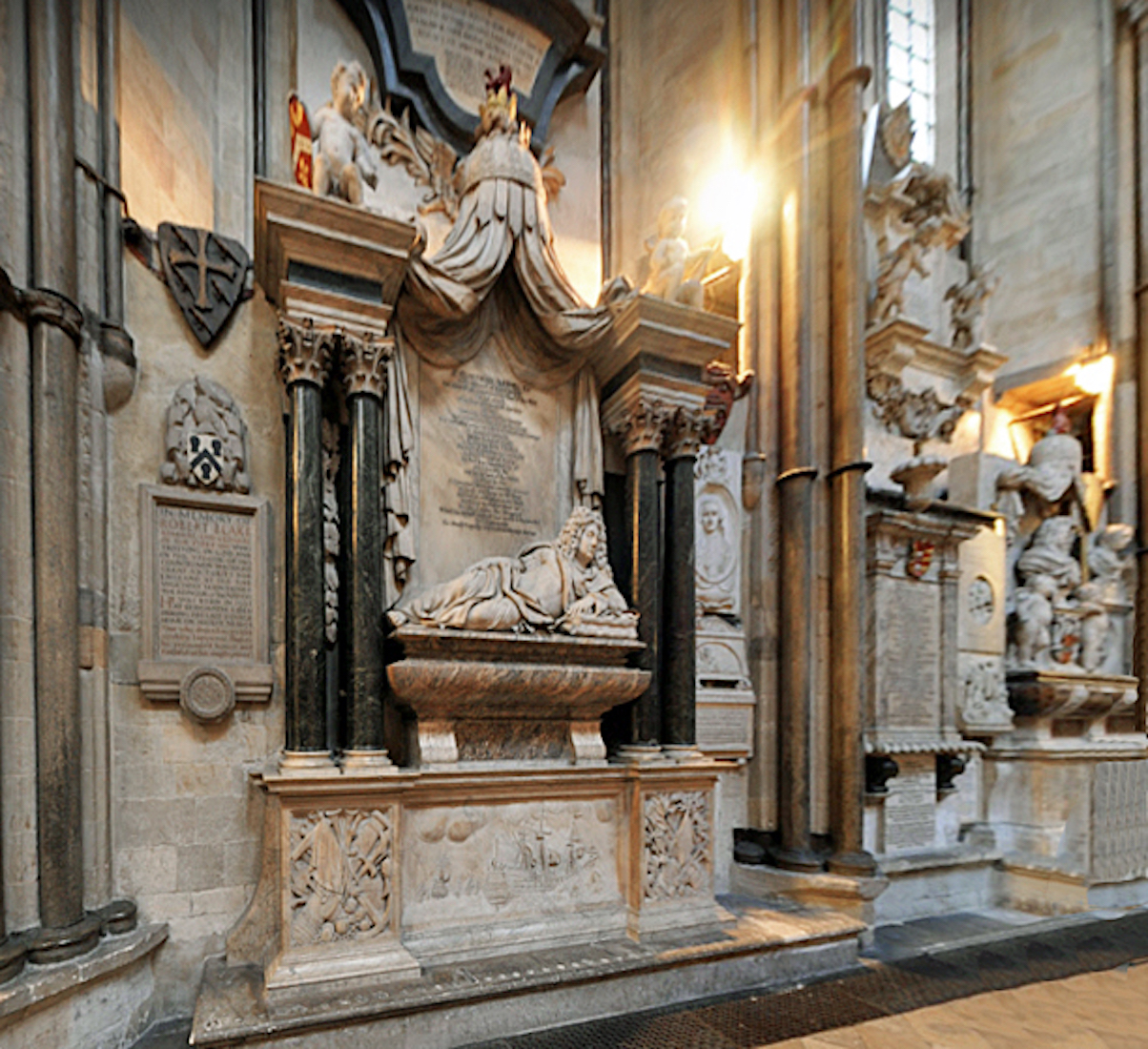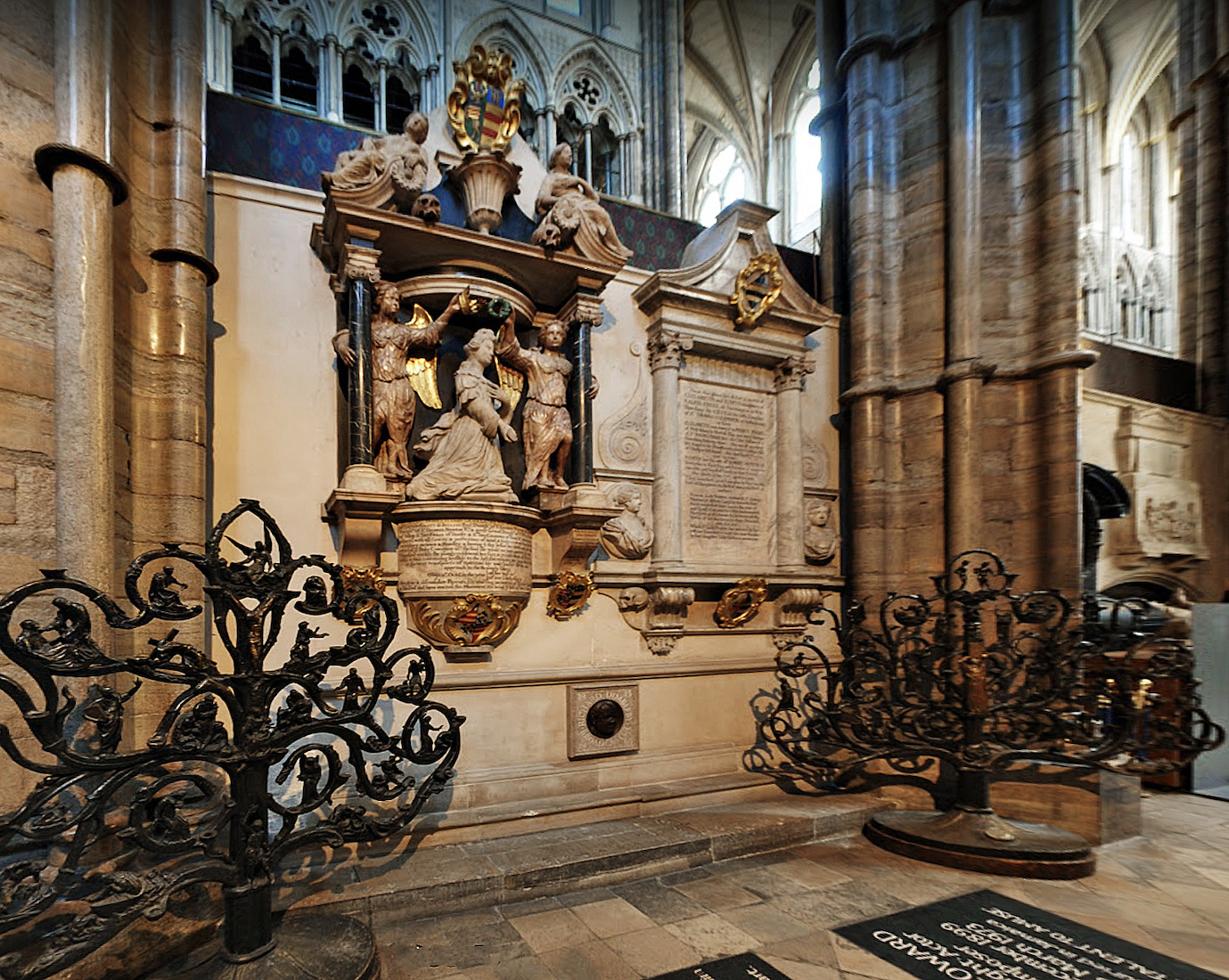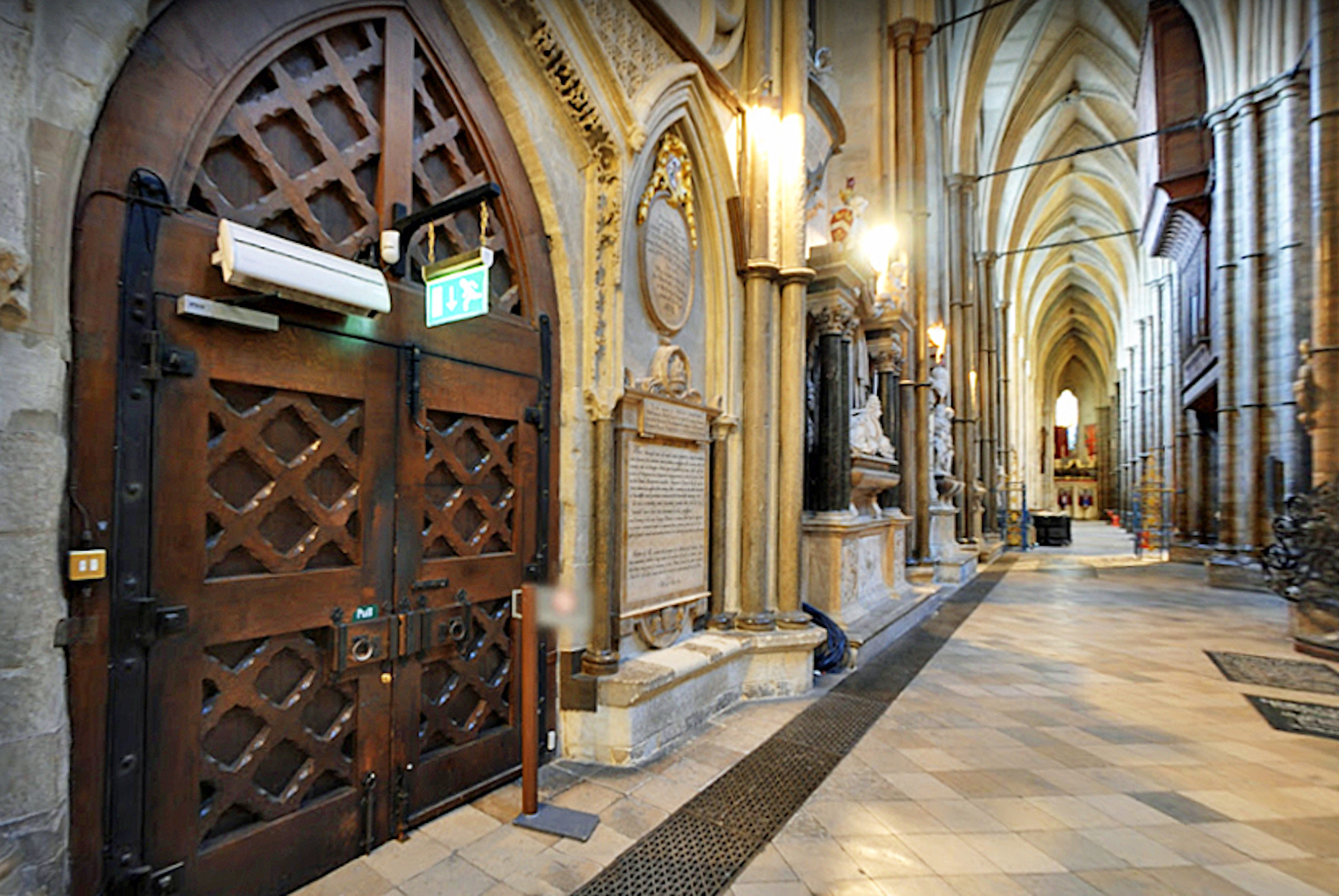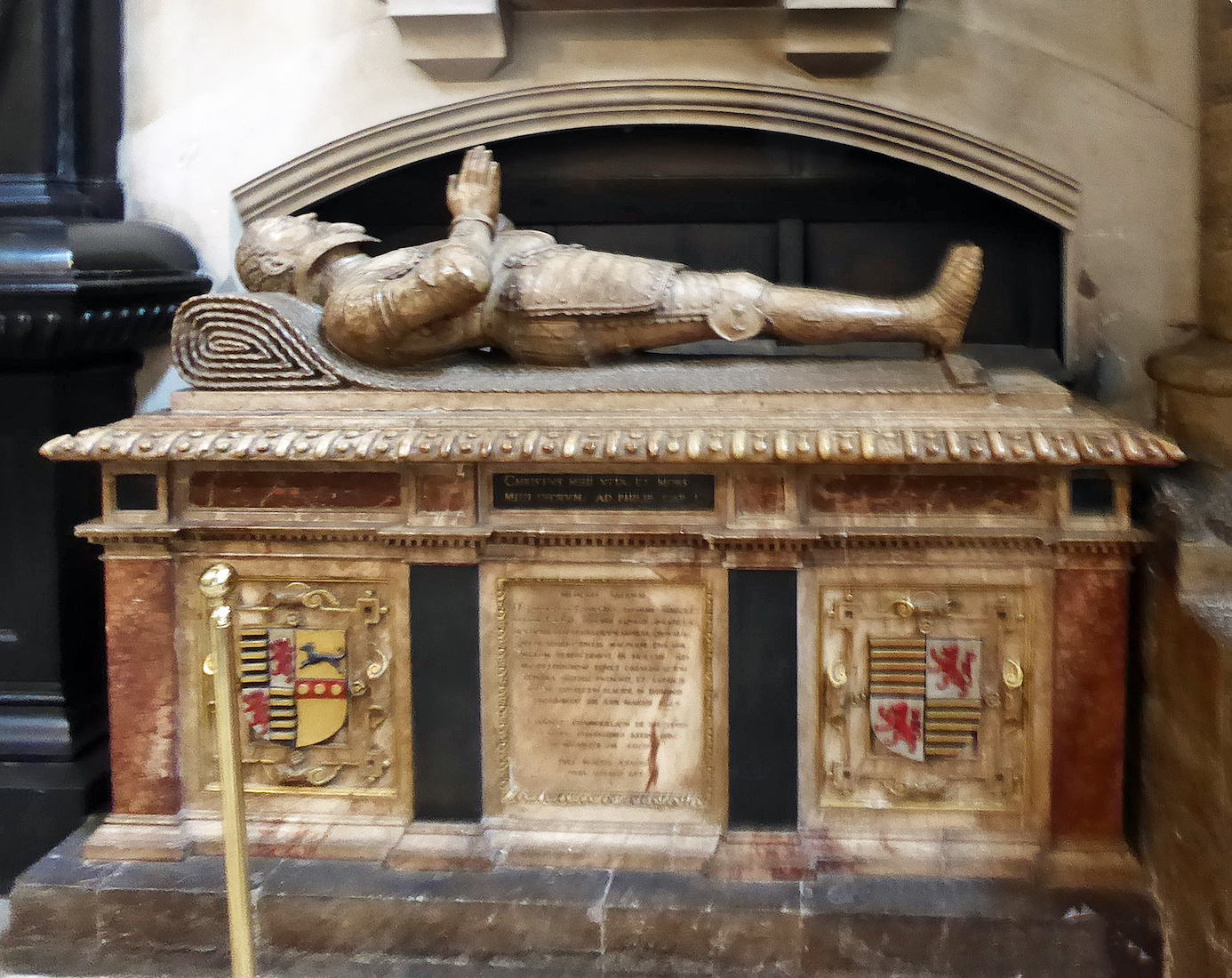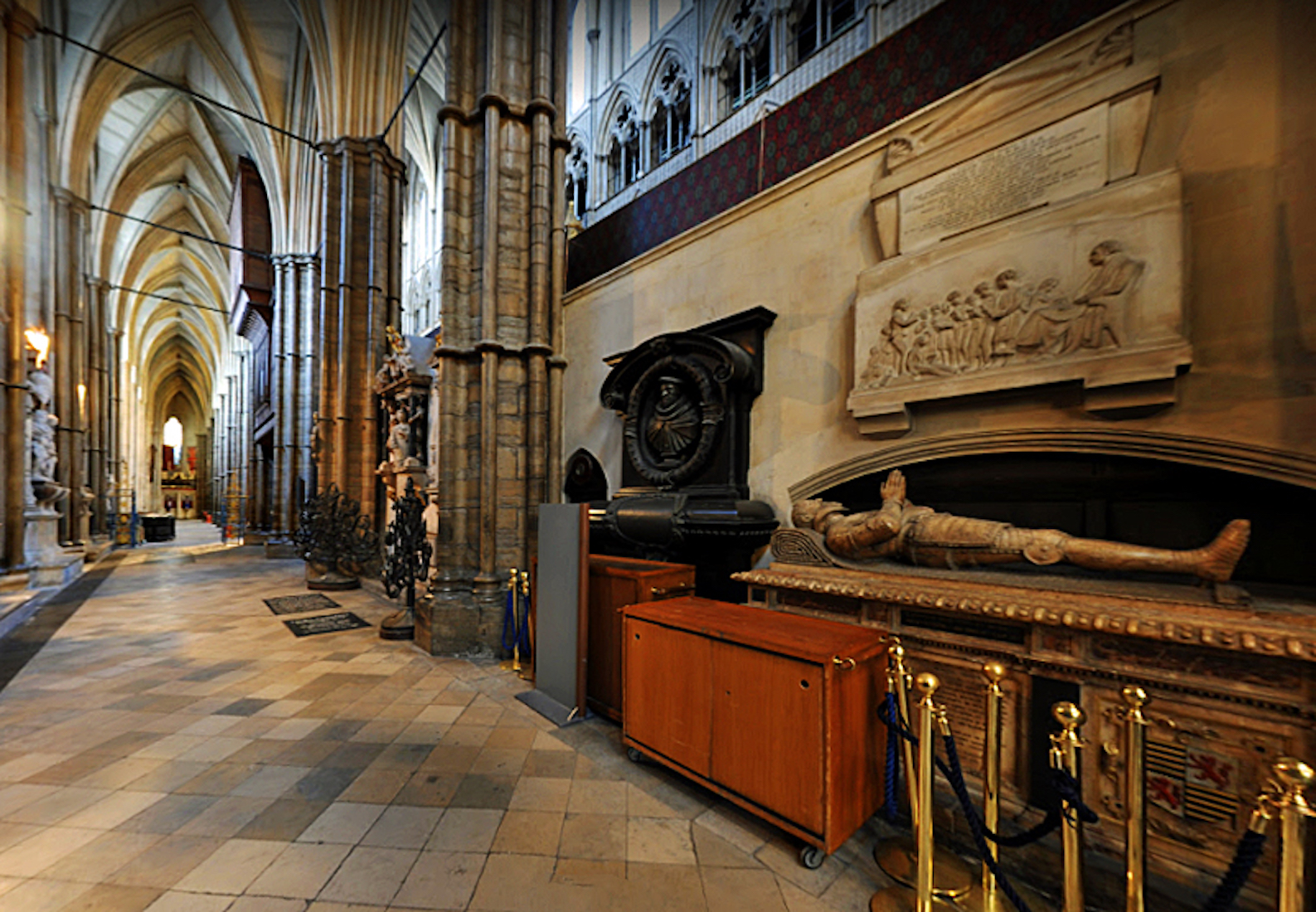C21. SOUTH QUIRE AISLE BAY 8 GSV
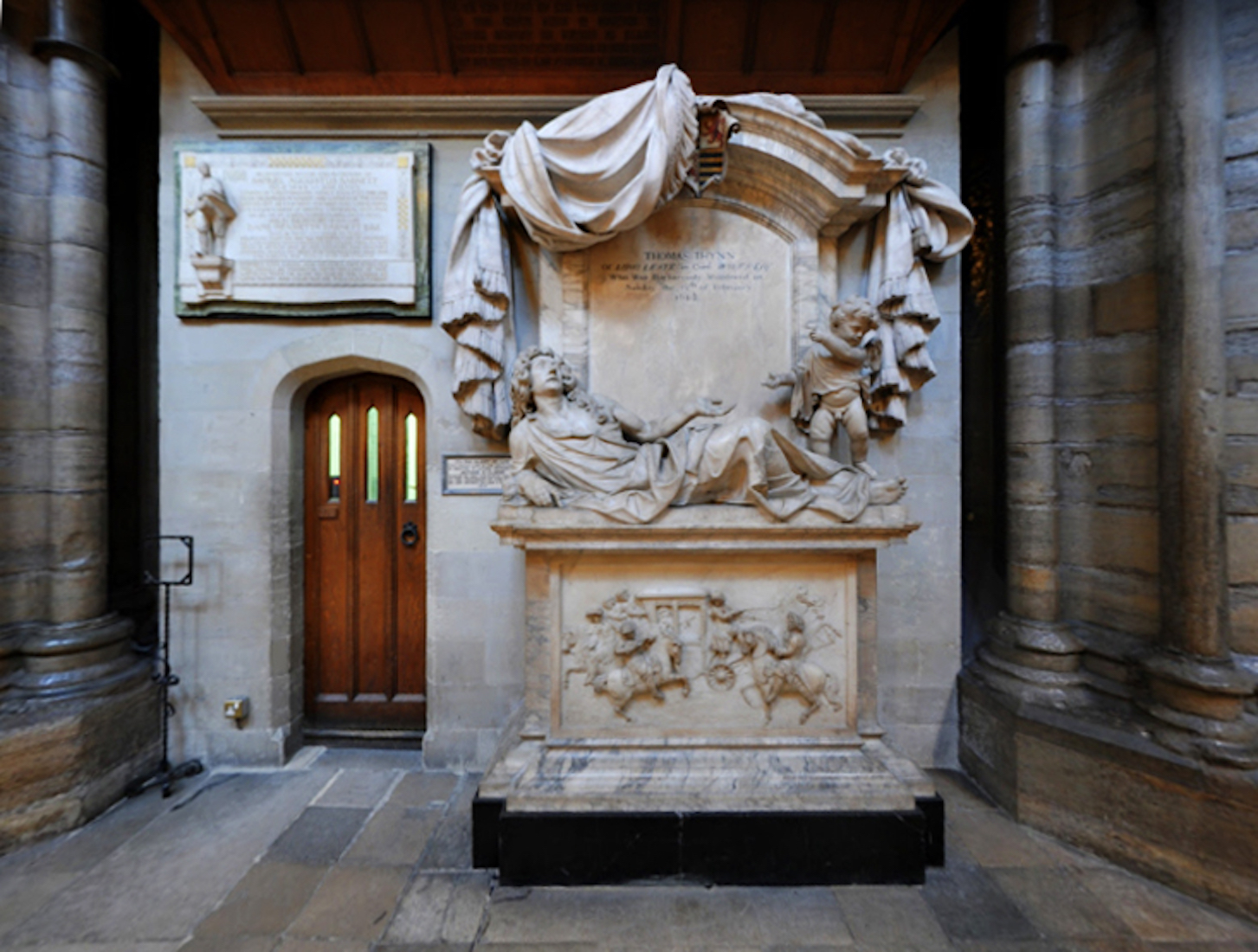
On the inner wall of Bay 8 is this monument to Thomas Thynn(e). The inscription reads: THOMAS THYNN of LONG LEATE in Com. WILTS Esqr. who was barbarously murdered on Sunday the 12th of February 1681/2. There is a story here! INDEX
C22. SOUTH QUIRE AISLE, WESTERN GATES GSV
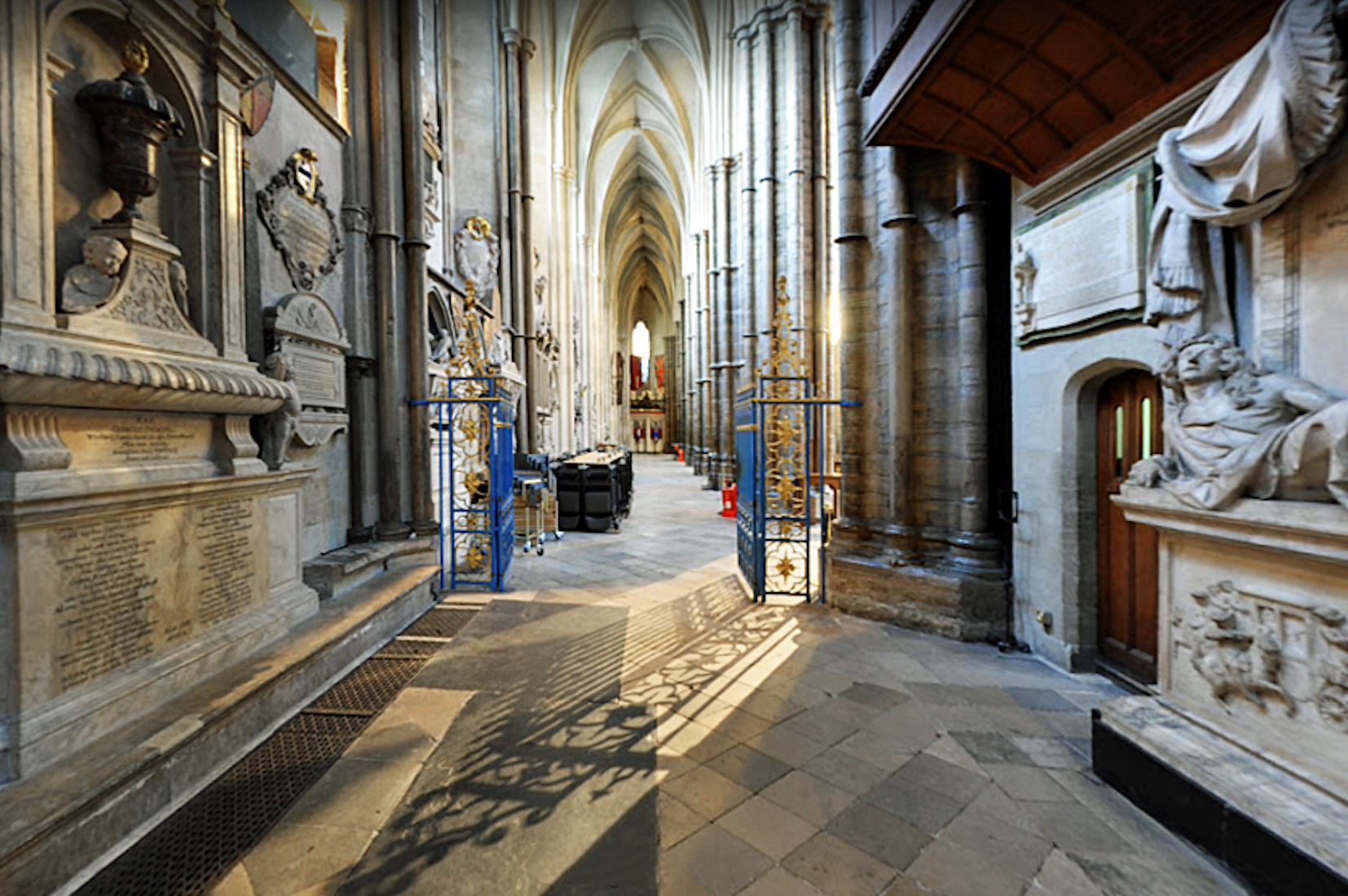
This view of the Western gates from a short distance up the Southern aisle, picks up some of the monuments at this end.
C23. SOUTH BAY 9, MONUMENTS GSV
These monuments are on the outer wall of South Bay 9. •• The flat monument shown at left is a large tablet in memory of the Reverend Dr Thomas Knipe (d.1711), Head Master of Westminster School and Prebendary of Westminster. He was probably the son of the Reverend Thomas Knipe and Anne his wife and grandson of Christopher Knipe, citizen and haberdasher of London. •• The dramatic monument towards the right is to George Stepney, diplomat, who is buried in the Abbey. He has a large monument of white and coloured marbles not far from his grave. This is attributed to the sculptor Grinling Gibbons. It shows a bust of George with his coat of arms. On either side is a winged cherub and above is a tented canopy. ••
C24. SOUTH BAY 9, INNER EFFIGY GSV
Along the inner wall of South Bay 9 lies an effigy of Thomas Owen, dressed in bright red. The Latin script reads: ‘Sacred to the Triune God expecting the second coming of Christ our Redeemer, under this tomb lies Thomas Owen Esq. son of Richard Owen, by Mary, daughter of Thomas Otley of the county of Salop [Shropshire] Esq., who from his youth instructed in the study of the municipal laws of England, so prospered in industrious application, readiness and judgment, that he was first chosen Serjeant at Law to Queen Elizabeth, afterwards one of the Justices of the Court of Common Pleas, among whom he had sat five years with singular integrity, equity and commendable prudence, And by Sarah his wife, only daughter and heir of Humphrey Baskerville, had had five sons and as many daughters. And married Alice his second wife, who survives him. He devoutly slept in Christ the 21st day of December in the year of our Redemption 1598. Roger Owen, his most afflicted son, hath, as a proof of his officious duty, and regard to the memory of this best of fathers, erected this monument. The souls of the righteous are in the hand of God.’
C25. SOUTH BAY 10, MONUMENT GSV
This large marble monument on the outer wall of South Bay 10 remembers the famous admiral Sir Cloudesly Shovell. It is by the sculptor Grinling Gibbons. It was erected by order of Queen Anne and the inscription reads: ‘Sr CLOUDESLY SHOVELL Knt Rear Admirall of Great Britain and Admirall and Commander in Chief of the Fleet: the just rewards of his long and faithfull services. He was deservedly beloved of his Country and esteem’d, tho’ dreaded, by the enemy who had often experienced his conduct and courage. Being shipwreckt on the rocks of Scylly in his voyage from Thoulon the 22d of October 1707, at night, in the 57th year of his age his fate was lamented by all but especially the sea faring part of the Nation to whom he was a generous patron and a worthy example. His body was flung on the shoar and buried with others in the sands; but being soon taken up was plac'd under this monument which his Royall Mistress has caus'd to be erected to commemorate his steady loyalty and extraordinary vertues.’
C26. SOUTH BAY 10, MONUMENT GSV
This monument to Grace Gethin appears on the inner wall of South Bay 10. Grace Gethin (1676 – 1697) was an English essayist. She died young and her parents paid for memorials to her. Gethin was born in 1676, probably at Abbotsleigh. She was the last child of Lady Frances Norton and her husband Sir George Norton. Gethin married an Irish aristocrat, Sir Richard Gethin, 2nd Baronet, of Gethinsgrott, County Cork. They had no children. He died in 1709, aged 35. She died aged 21 after taking communion the day before. She was buried in Hollingbourne Church where there is a memorial to her. Her parents paid for another memorial in the Abbey, and a sermon to be read every Ash Wednesday to remember her life. Her mother wrote books about her grief. After her death, 29 essays were published with her as the nominal author. Later analysis revealed that Francis Bacon’s words appear without attribution in a quarter of them.
C27. SOUTH BAY 11, DOOR GSV
The most impressive sight on this outer wall is this magnificent old door to the cloister!
C28. SOUTH BAY 11, INNER WALL AMT
On the inner wall of this bay is an altar tomb of alabaster and marble to William Thynne. His recumbent effigy in armour lies on a rush mattress, and below are shields of arms and an epitaph. The tomb was probably made by the Johnson workshop, of the Southwark school of sculptors. The Latin inscription can be translated: ‘Christ is my life, and death my gain ... Here lies William Thynne, Esq. brother of Sir John Thynne, knight, descended from the ancient family of the Bottevilles, who in his youth travelled to most parts of Europe, fought against the Scots at Musselburgh with undaunted courage. At length, enfeebled with age, he went to sleep in the Lord 14 March 1564. John Chamberlain of Prestbury, Esq., to his most dear kinsman, hath erected this monument. The day of death is the birthday of eternal life.’ The monument was restored in 1875 and the Tudor archway above it was designed by Sir George Gilbert Scott. Further back along the aisle, as we have seen, is a monument to Thomas Thynne.
C29. SOUTH QUIRE AISLE LOOKING WEST AMT
We conclude our investigation of the quire section of the Abbey with a look back down the South aisle. We will now move across to the North transept.


